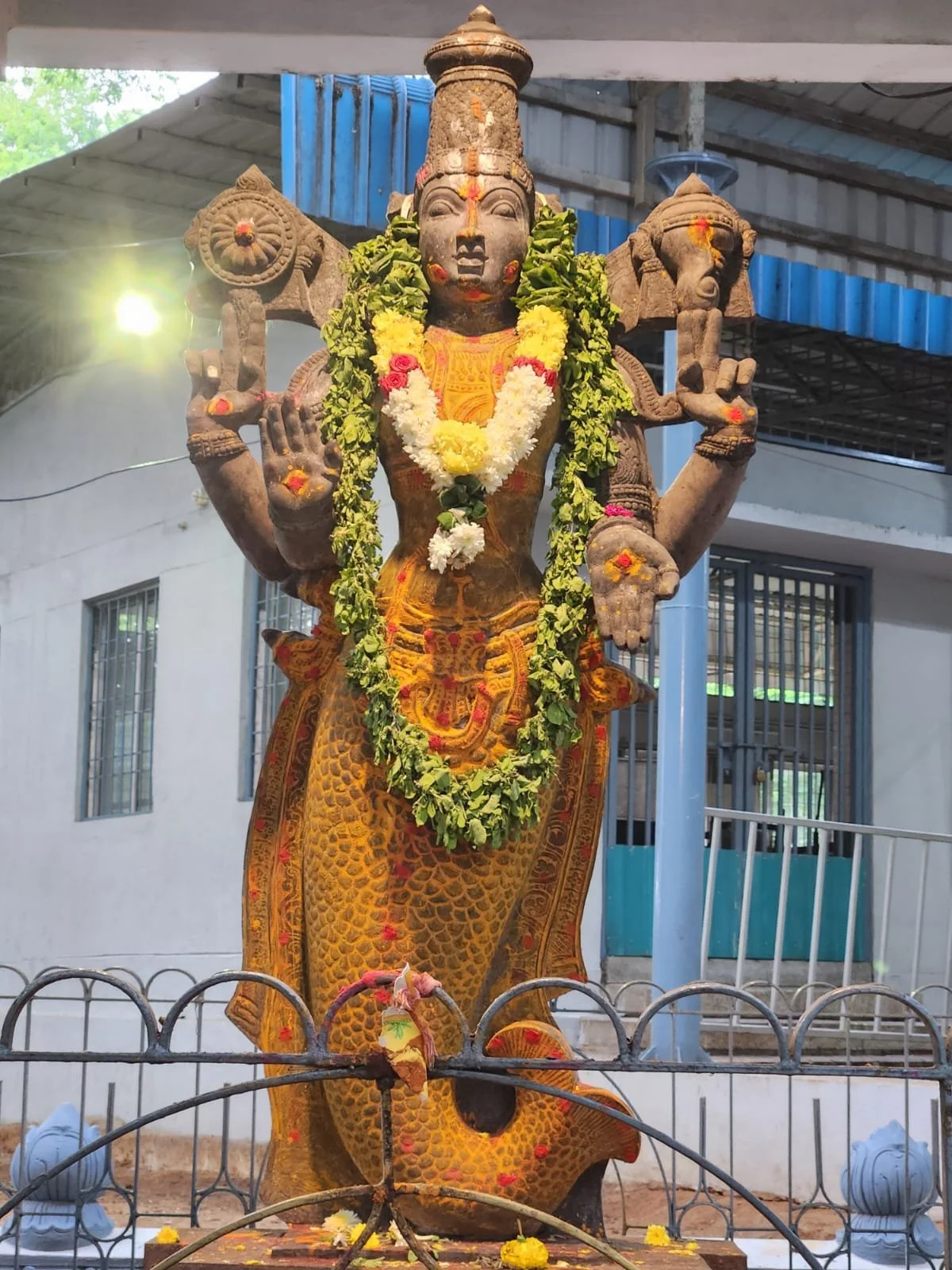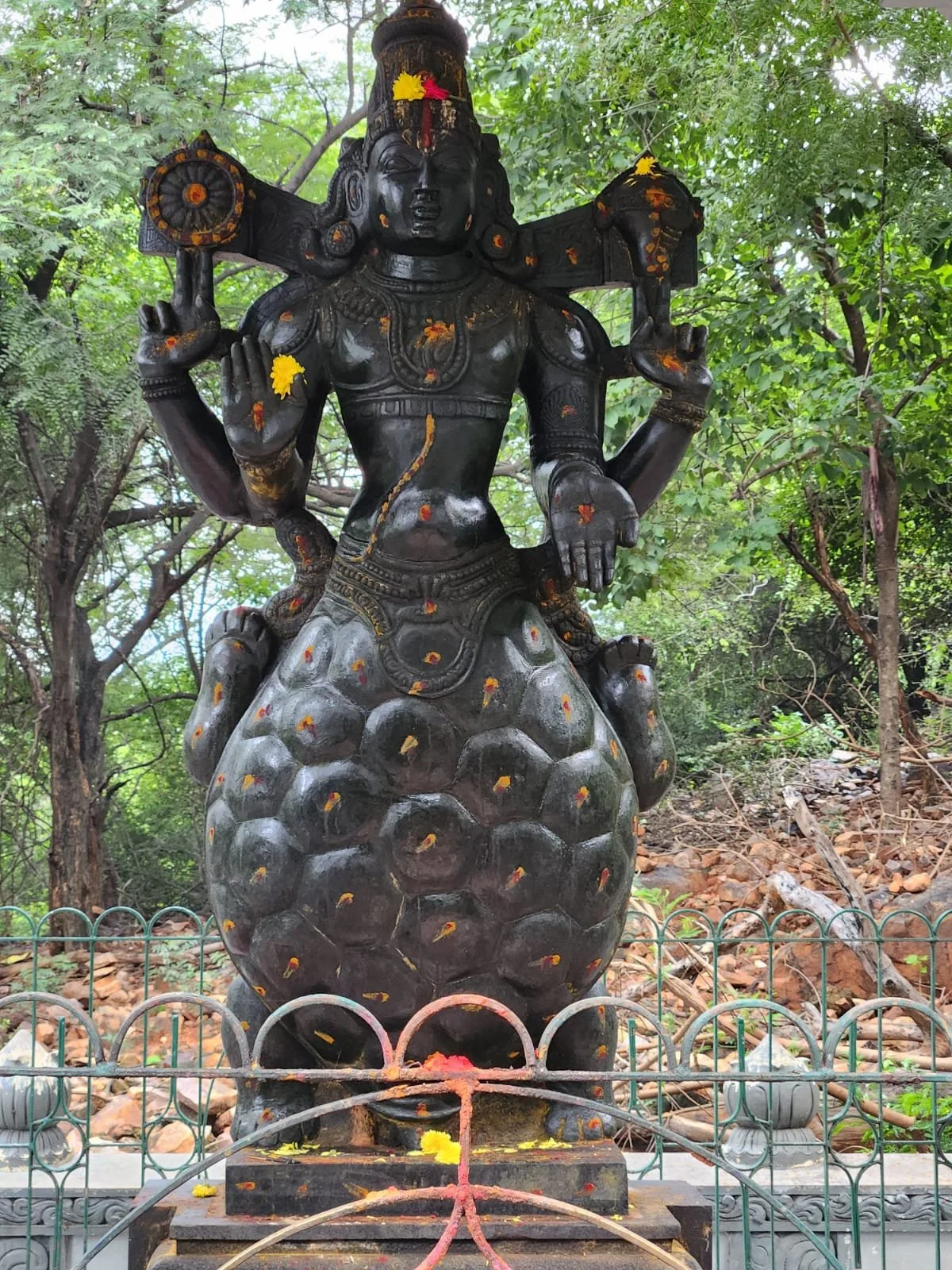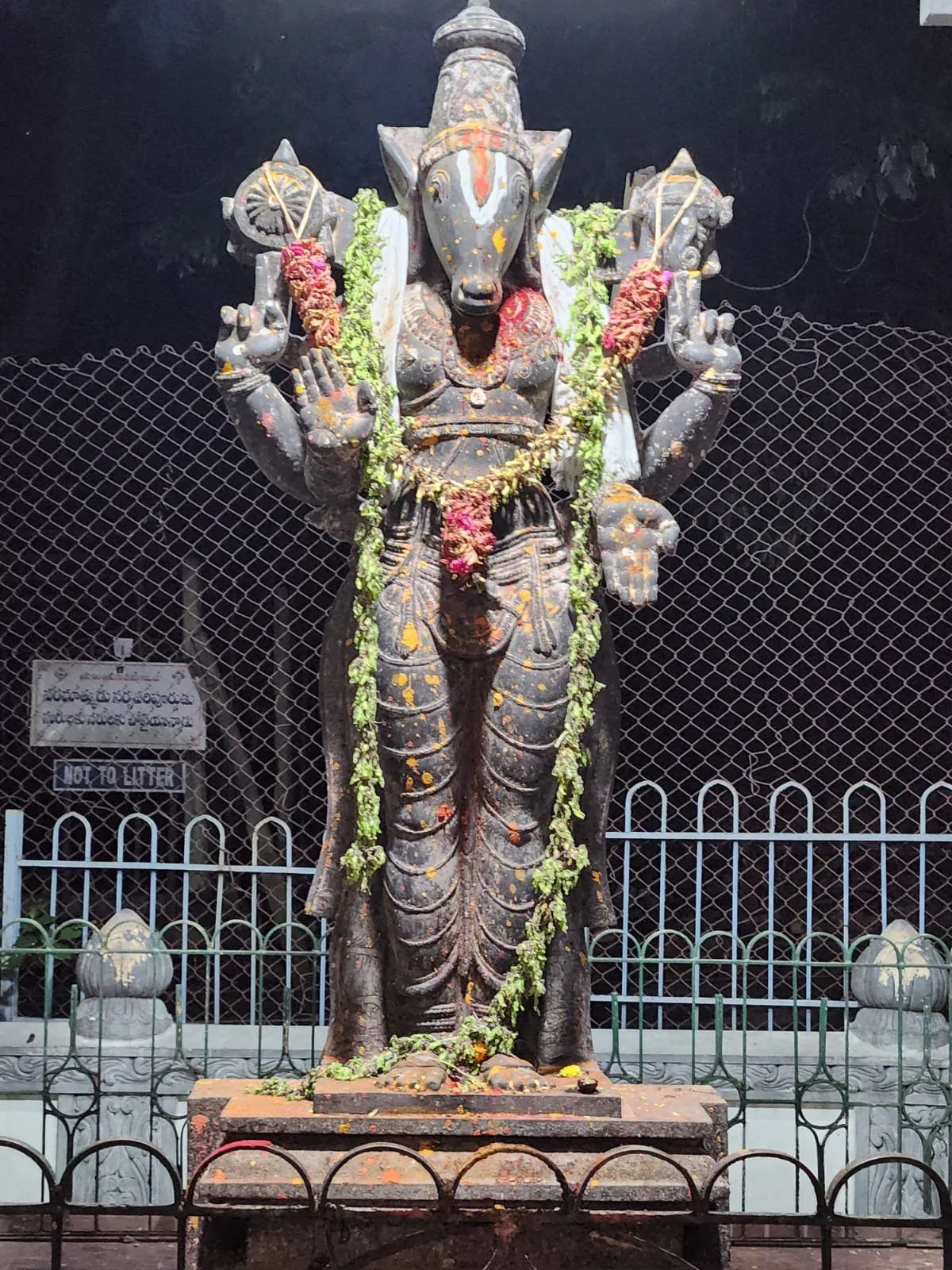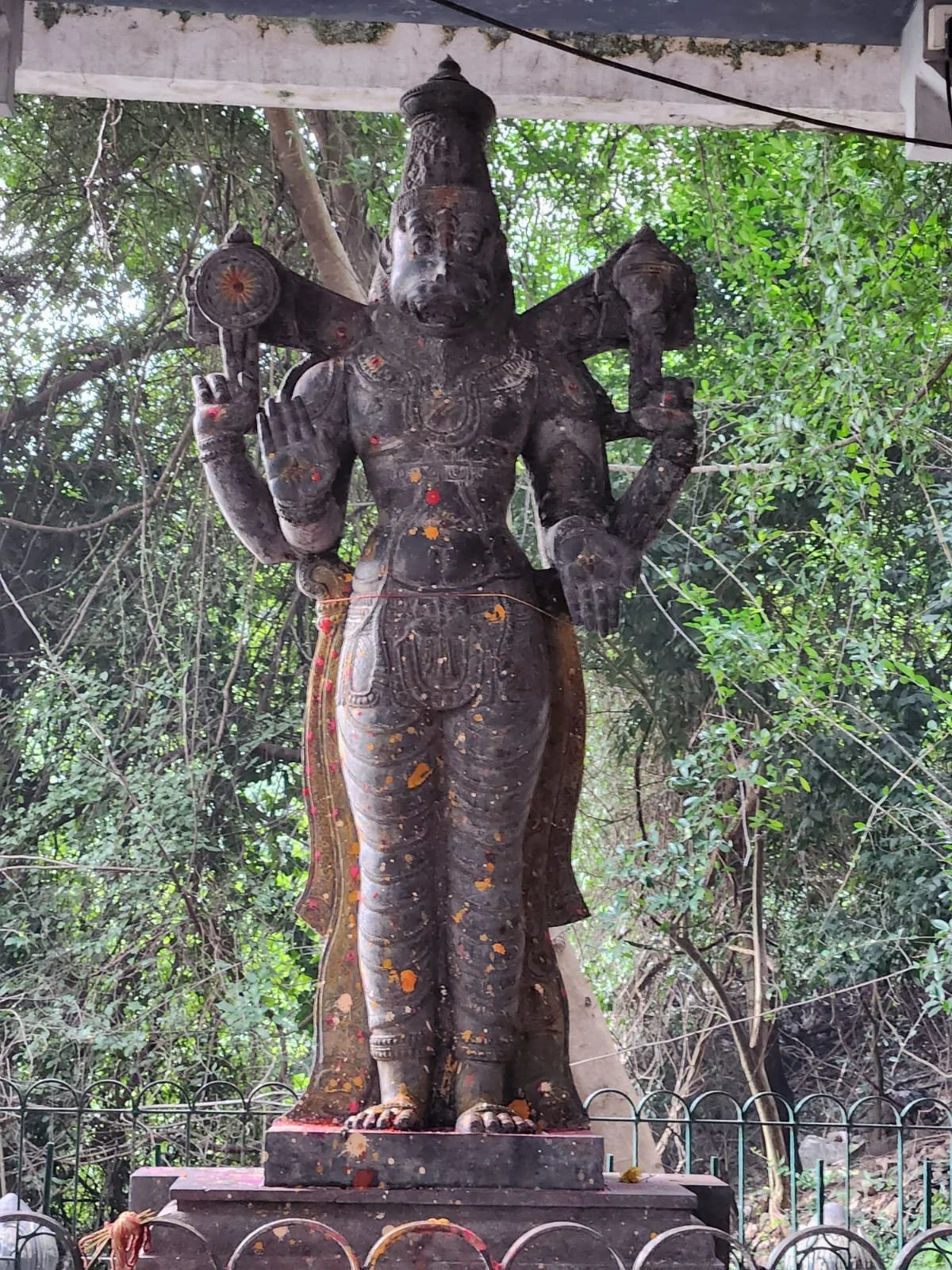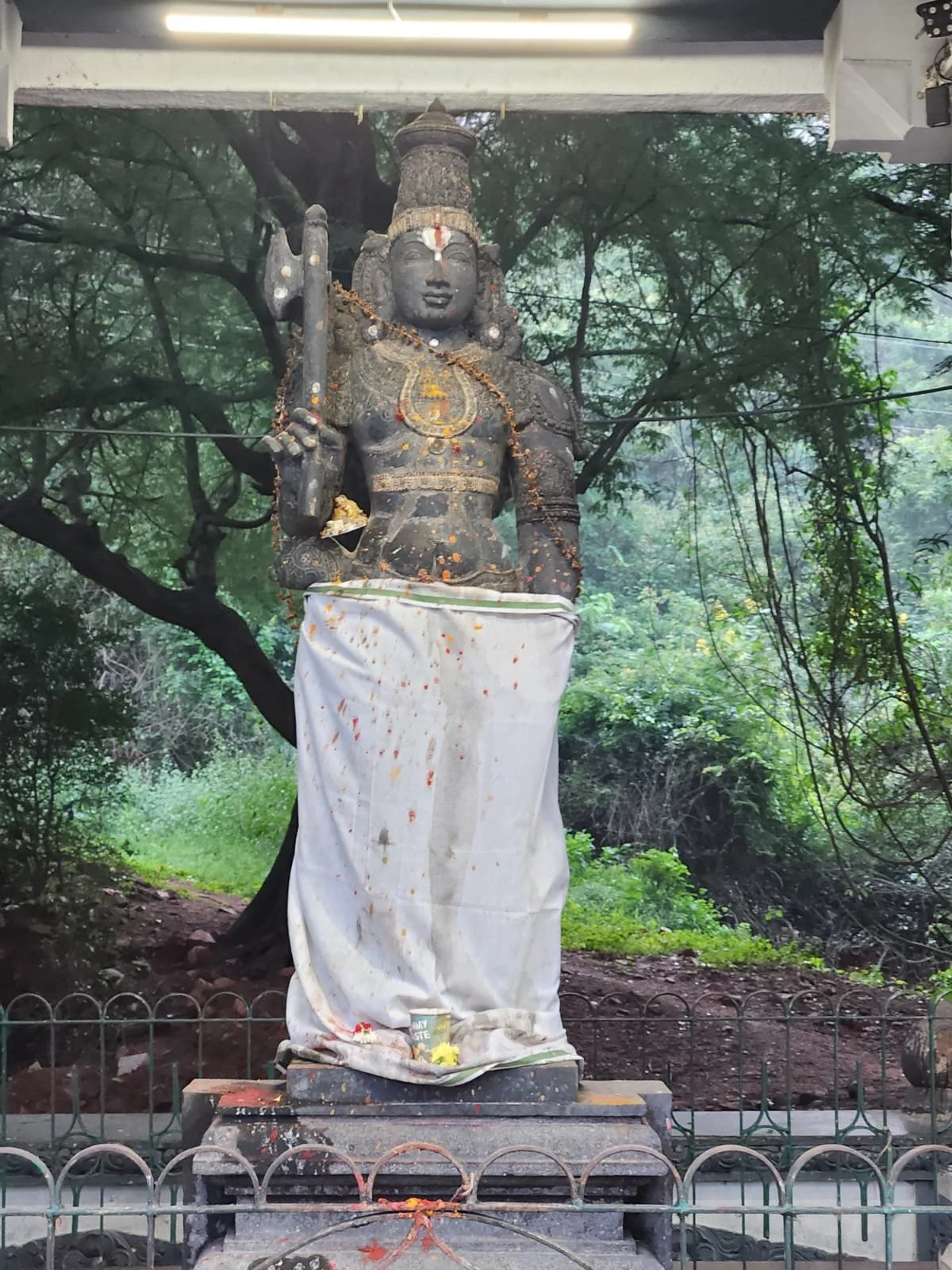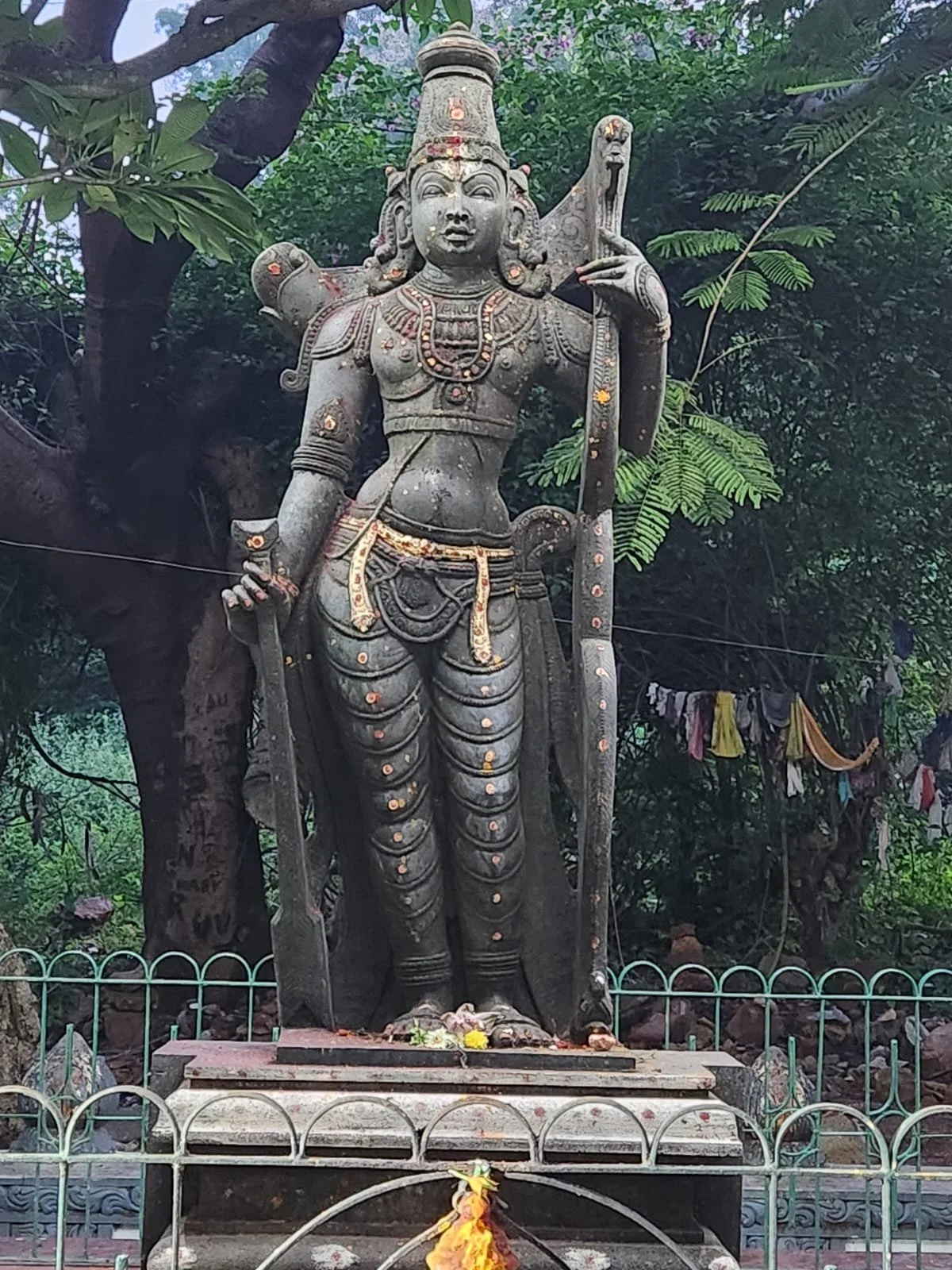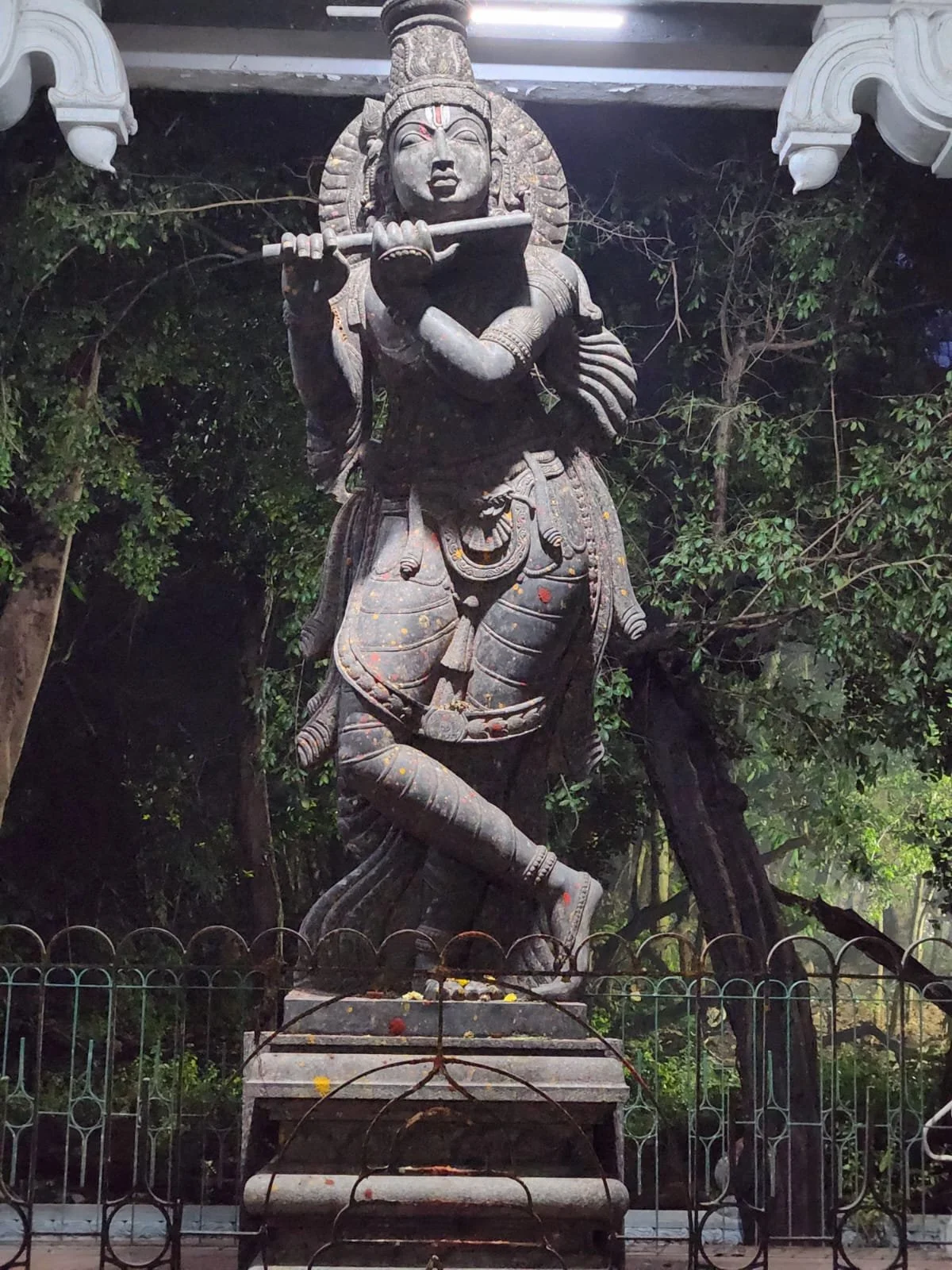Who Are the Dashavatars?
by Aadya Bommineni, Ardhana Praveen, and Shriya Shaji
In this section, you will learn about the origin of the Dashavatars, the 10 distinct incarnations of Lord Vishnu, and their significance.
Introduction
Welcome to our informational section of Vyakhya! This month, we spotlighted the Dashavatars, the ten incarnations of Lord Vishnu. Each avatar holds a special significance in Hindu traditions and carry unique stories that can be applied to the modern era. They represent themes such as restoration, preservation, dharma (righteousness), and maintaining morals and virtues. You will find a section dedicated to each avatar and learn about the stories and lessons they pass on. We've also curated a collection of original pictures from Tirumula, Tirupati, of the glorious statues of the Dashavatars. Alongside, we have created a Kahoot quiz to recap each of the Dashavatars, featuring artwork from Sanika Kabbur. Enjoy!
Matsya
Matsya, meaning fish in Sanskrit, is the first avatar of Lord Vishnu. He incarnated in this form to save the planet from the transition to the next yuga, when the Earth would be flooded and to save mankind, he guided King Manu, a devotee, to gathering two of each fauna and flora and the Sapta Rishis and escaping the destruction, along with ridding the world of Hayagriva, the horse-headed demon who stole the Vedas from Brahma.
Kurma
The second incarnation of Lord Vishnu is Kurma, where he incarnated as a turtle, supporting the churning of the ocean of milk, known as the Samudra Madana, which was done to obtain the nectar of immortality and to restore balance to the Universe. He was led by the gods and demons along with the help of Mt. Mandara and King Vasuki. When the churning process started, Mt. Mandara began to sink, and so to help support and continue the churning, Lord Vishnu turned into a gigantic turtle, known as Kurma, and held the mountain to prevent it from sinking.
Varaha
The third avatar of the Dashavatars is the boar incarnation of Lord Vishnu known as Varaha. In this form, Varaha saves planet Earth, Bhoomi Devi, from the demon Hiranyaksha. Hiranyaksha was given the boon (blessing) to not be killed by a god or human making him think that he was immortal. He started terrorizing the universe and eventually kidnapped Bhoomi Devi and threw the planet into primordial waters. Lord Brahma prayed to Lord Vishnu for help to stop Hiranyaksha and his evil. Lord Vishnu then appeared from Lord Brahma’s nose in the form of a tiny boar and then grew to a colossal size. He then went and rescued Bhoomi Devi and returned to planet Earth by carrying her with his tusks. Afterward, he fought and rid the world of Hiranyaksha, saving the universe and planet.
Narasimha
The story of Lord Narasimha is about how a god saved his devotee in a crisis. King Hiranyakashipu forced all his citizens to worship him. He believed that he was mightier and stronger than all the gods since he was given a boon by Lord Brahma that he would be killed by neither man nor animal, neither at day or night, neither by anything created by Lord Brahma or a weapon and not inside or outside. He was convinced that he is invincible. Hiranyakashipu also forced his son, the devotee of Lord Vishnu, Bhakta Prahlada, to worship him instead. However, Prahlada rejected him, and so Hiranyakashipu tried to kill him, but his attempts were failed by the protection of the gods. One day, out of anger, the arrogant king got mad at Prahlada for saying that his god was everywhere and mockingly asked if his god was in one of the pillars in the castle. He knocked on one of the pillars. Suddenly, Lord Narasimha burst out of the pillar. He picked Hiranyakashipu up and took him to the area right next to the door, in between the outside and inside. He was half human and half lion; it was dawn. Lord Narasimha killed Hiranyakashipu using his claws, which weren’t made by Lord Brahma or were a weapon and saved Prahlada and the kingdom.
Vamana
The 5th avatar of Lord Vishnu is Vamana, a dwarf brahmin, and is recognized for the umbrella he holds. Bali, king of the demons, fought Indra, king of the devas. Since he won, he was given control of the heavens, earth, and underworld. Lord Indra’s mother, Aditi, prayed to Lord Vishnu for help, and so Lord Vishnu tells her that later, he will be born as Aditi’s son and get rid of Bali. After Aditi gave birth to her son, named Vamana, he went as a brahmin and asked to own the land he can cover in three steps. Bali agreed, unknowing of Vamana’s powers. Then, Vamana grew to a size bigger than the Earth and took two steps. By then he covered everything, and the demons tried to fight him, but failed. Then Bali, out of humility, offered his head as the third step, and Vamana placed his foot on his head. Because he was humble enough to offer his head, Vamana blessed Bali to be the king of the underworld.
Parashuram
The avatar holding an axe is known as Parashuram, son of sage Jamadagni and Renuka. King Kartavirya Arjuna came to Parashuram’s home when he wasn’t there, him and his soldiers tried to take Kamadhenu, the holy mother cow, and her calf. Sage Jamadagni tried to stop them, but the king killed him and took the cow. When Parashuram returned home, he saw his mother crying and asked what happened. After she told him, he said that he would kill the king and his troops in 21 moves because that was the number of times his mother beat her chest grieving. He then killed the king and soldiers and brought Kamadhenu and her calf back home.
Rama
The story of Rama is quite famous, known as the epic The Ramayana, where Prince Rama of Ayodhya was exiled for 14 years into a forest with his wife Sita and brother Lakshmana. However, one day Sita saw a golden deer and asked Rama to get that deer for her. So Rama ventured, leaving Lakshmana with Sita for safety, and tried to get the deer. However, after going out a distance, the deer assumed his original form as the demon Marichi, surprising Rama. He then called out, in a wounded voice imitating Rama, causing Lakshmana to leave Sita and find Rama, even though Rama was on his way back. However, Marichi and the demon king Ravana comes to abduct Princess Sita, and the story goes on to how Rama meets the Vanaras and bear king Jambavan and saves Sita. His avatar was known for teaching righteousness and being an example of how humans should lead an honest and truthful life.
Balaram
Balaram, the 9th avatar of Lord Vishnu is known as the elder brother of Lord Krishna, “Bala” meaning strength in Sanskrit. He is known for his strength and association with agriculture, as he holds a plough in his hand. In fact, in the Bhagavata Purana, using immense strength he pulled the Yamuna River closer to the city of Vrindavan and helped create new water channels for farming. Balaram used his defeated several asuras (demons) who were sent by the evil king Kamsa to harm themselves the kingdom. In the Mahabharata, he is known to represent fairness and loyalty in his teachings as well as the dialogue between himself and others.
Krishna
Krishna, the famous king of Dwarka, was known for his wits and tricks, helping the gods and people during their greatest needs. He is known for having his two lovely mothers, Devaki and Yashoda, and how during his childhood, he battled all the challenges sent by King Kamsa, his evil uncle, who locked up his parents and took away their earlier children. He played a tremendous role during the Mahabharat, helping the Pandavas fight against the Kauravas in the Kurukshetra War, protecting Draupadi in her time of need, and ensuring that the Pandavas would prevail against evil. He is particularly known for being Arjuna, the third Pandava brother, chariot driver in the war, giving his guidance as he fought against his cousins and relatives. This knowledge eventually became transcribed in the holy epic The Bhagavad Gita. His story is heavily interconnected with Balaram, the previous avatar of Lord Vishnu.
Kalki
The tenth and final avatar of Lord Vishnu is yet to come. The story goes about that Kalki, the last incarnation of the Dash avatar, will come at the end of the Kaliyuga, riding a white horse and holding a sword, to end the time of evil, lies, and hatred, and will save the world from Kali, which is equivalent to bad chaos.
Ready to test your memory of the Dashavatars? Can you name each one? Play the game to find out! We feature artwork from Sanika Kabbur, who created all of the artwork in our Kahoot quiz.


